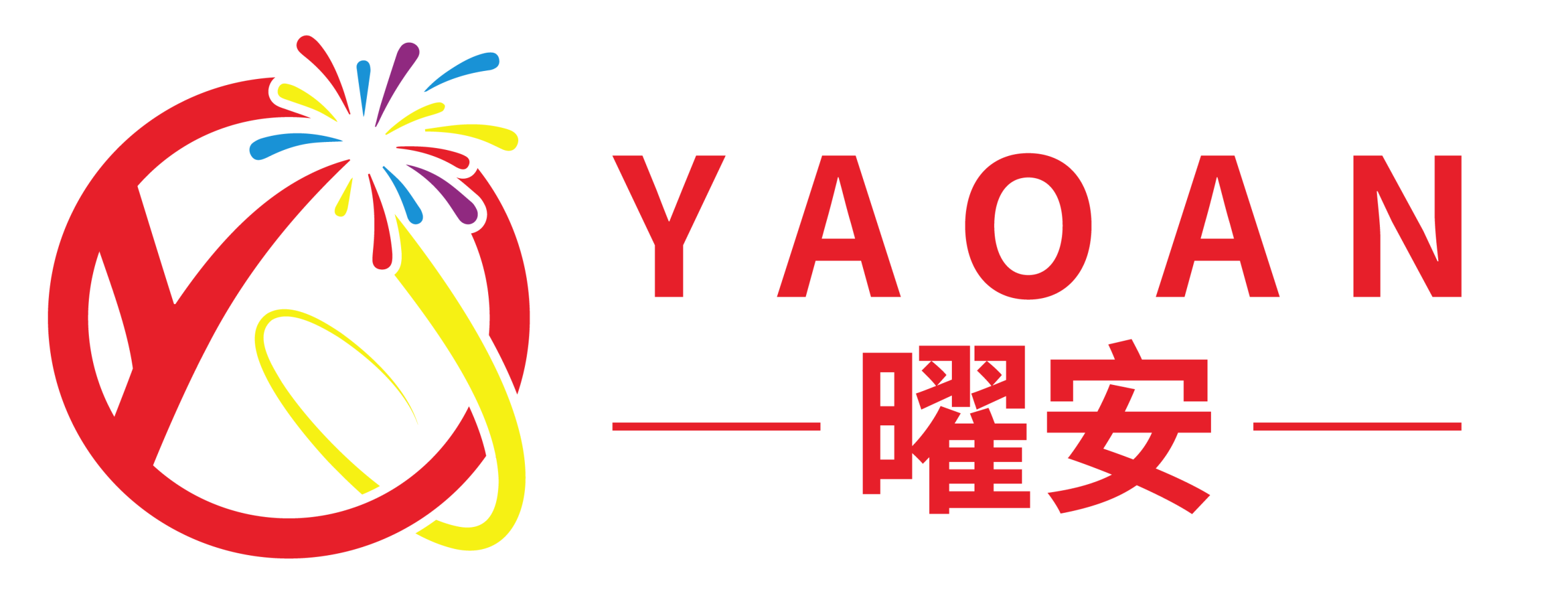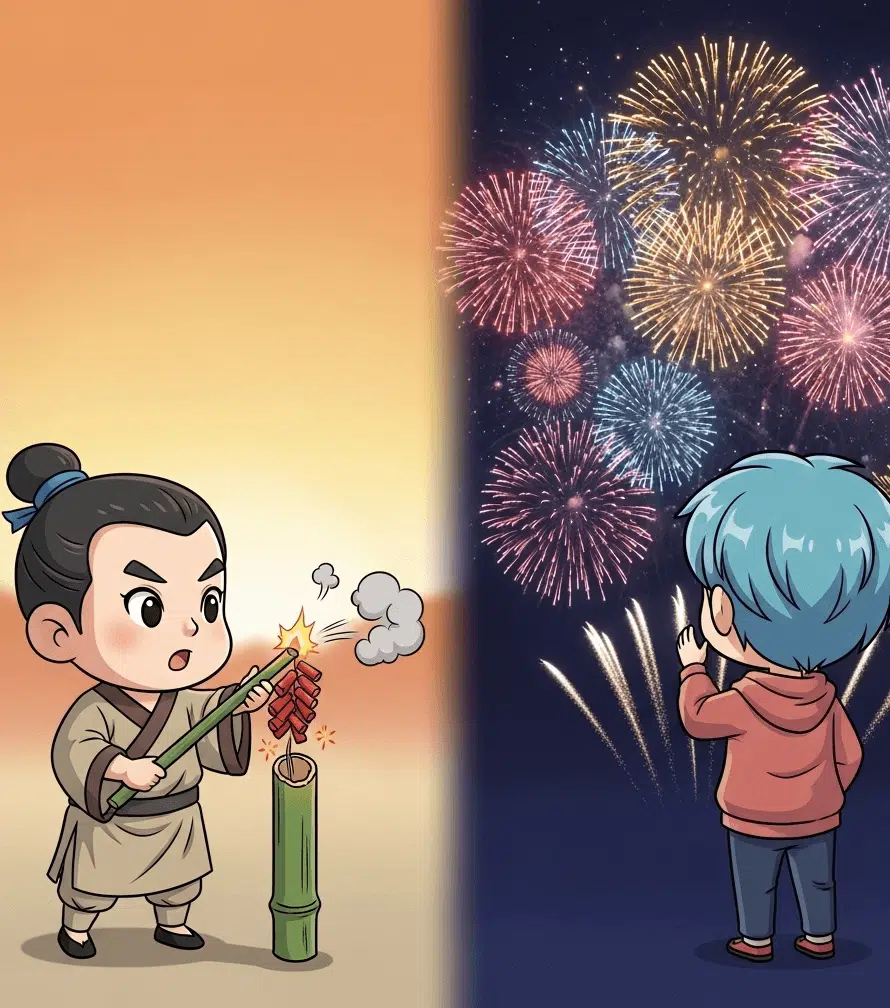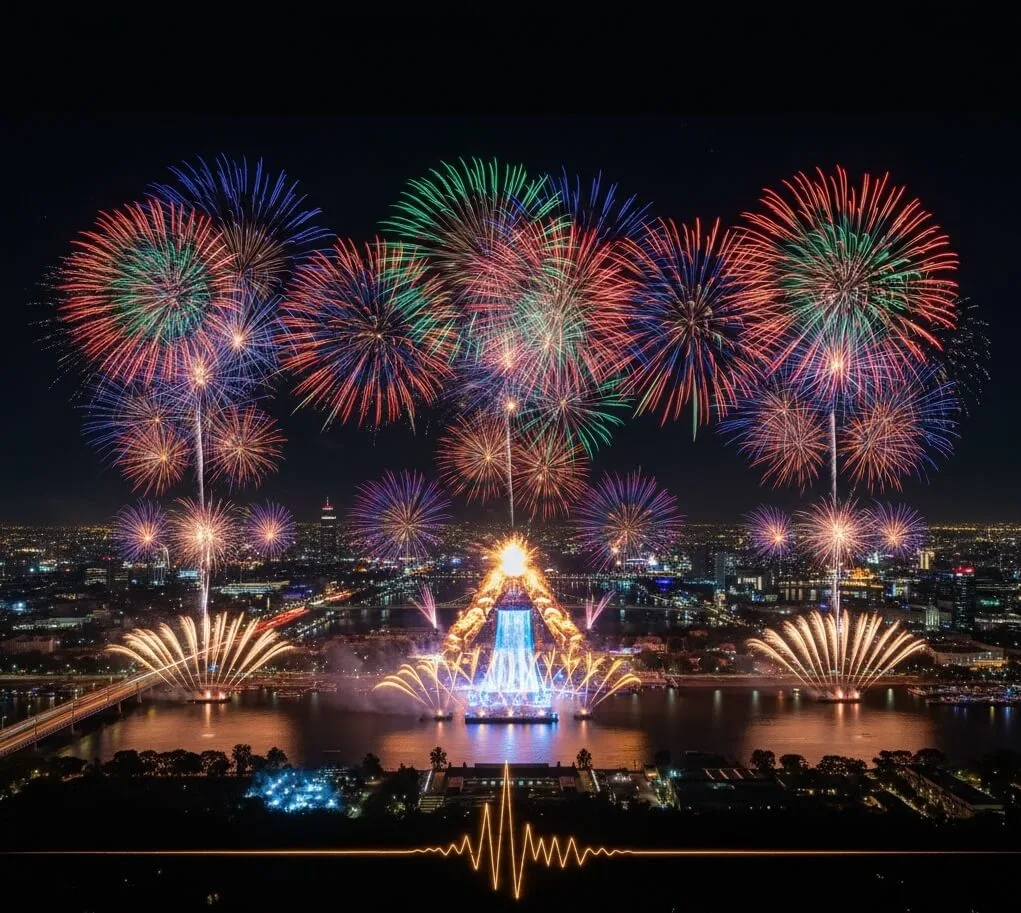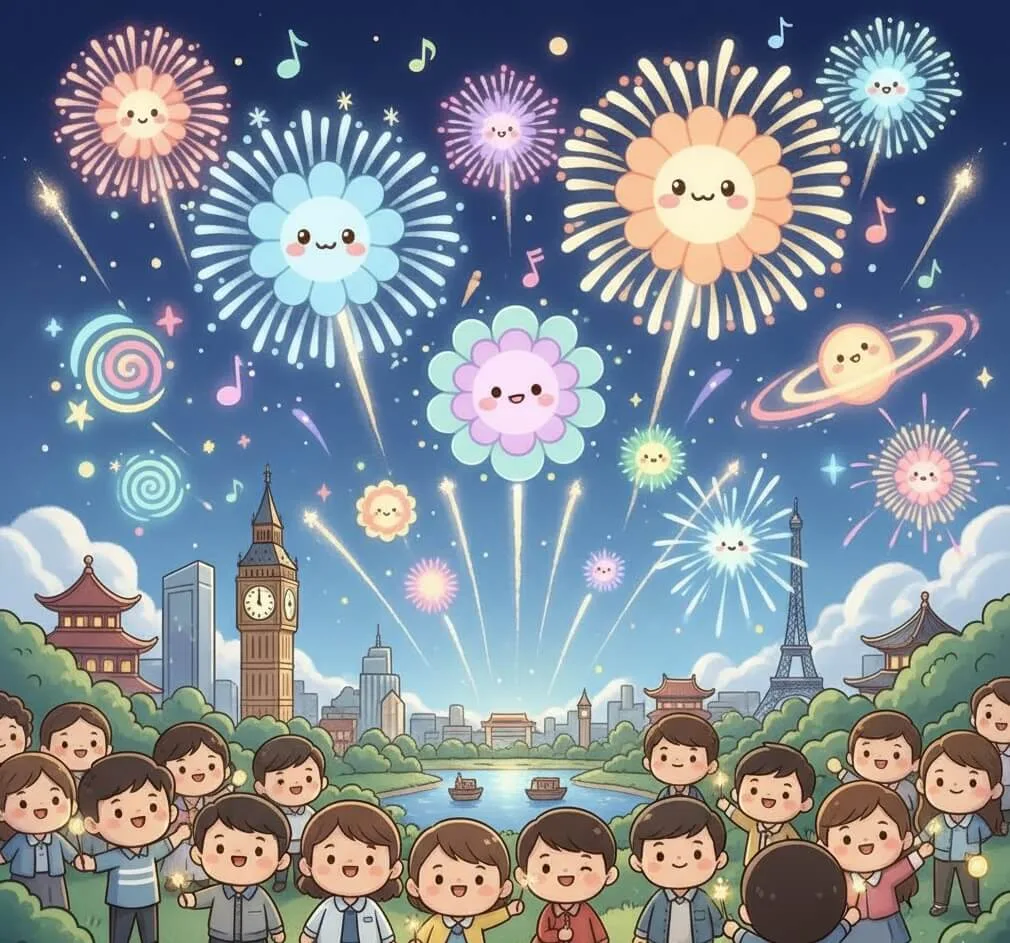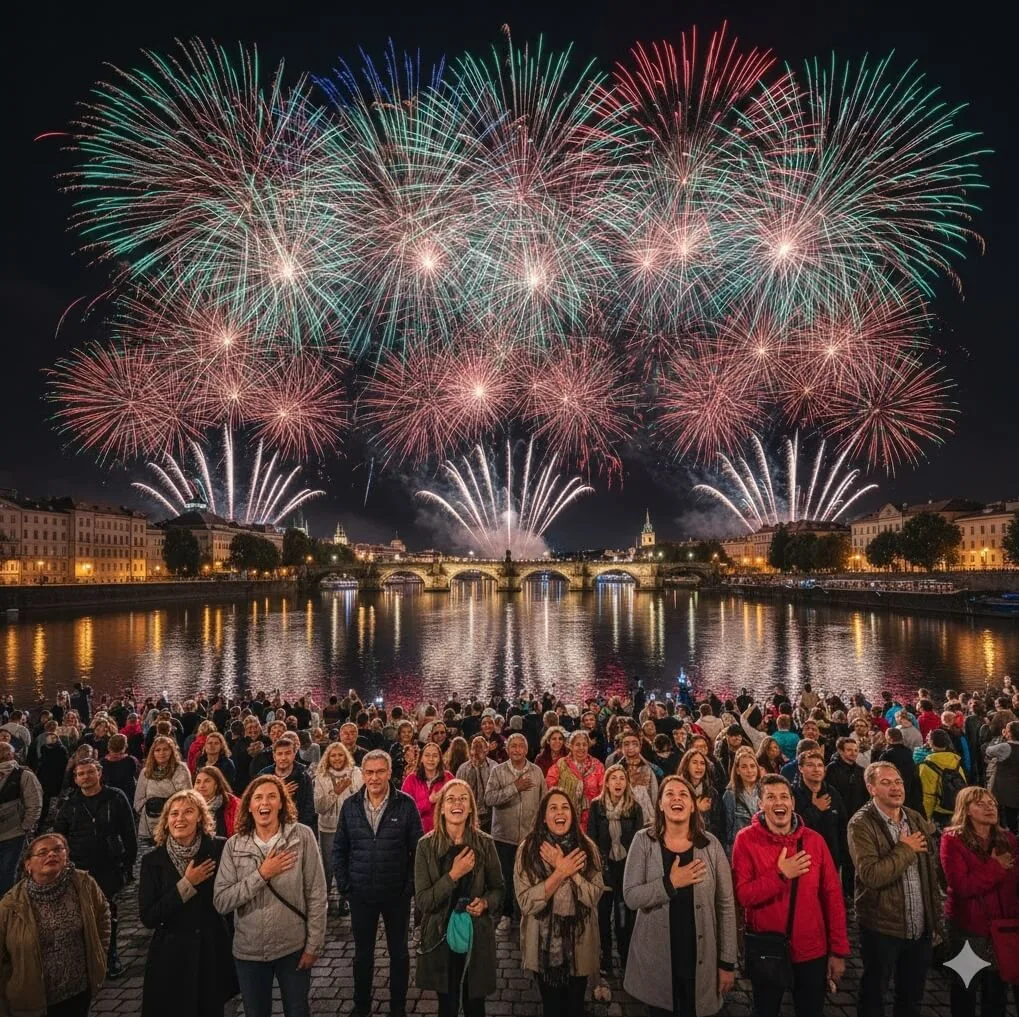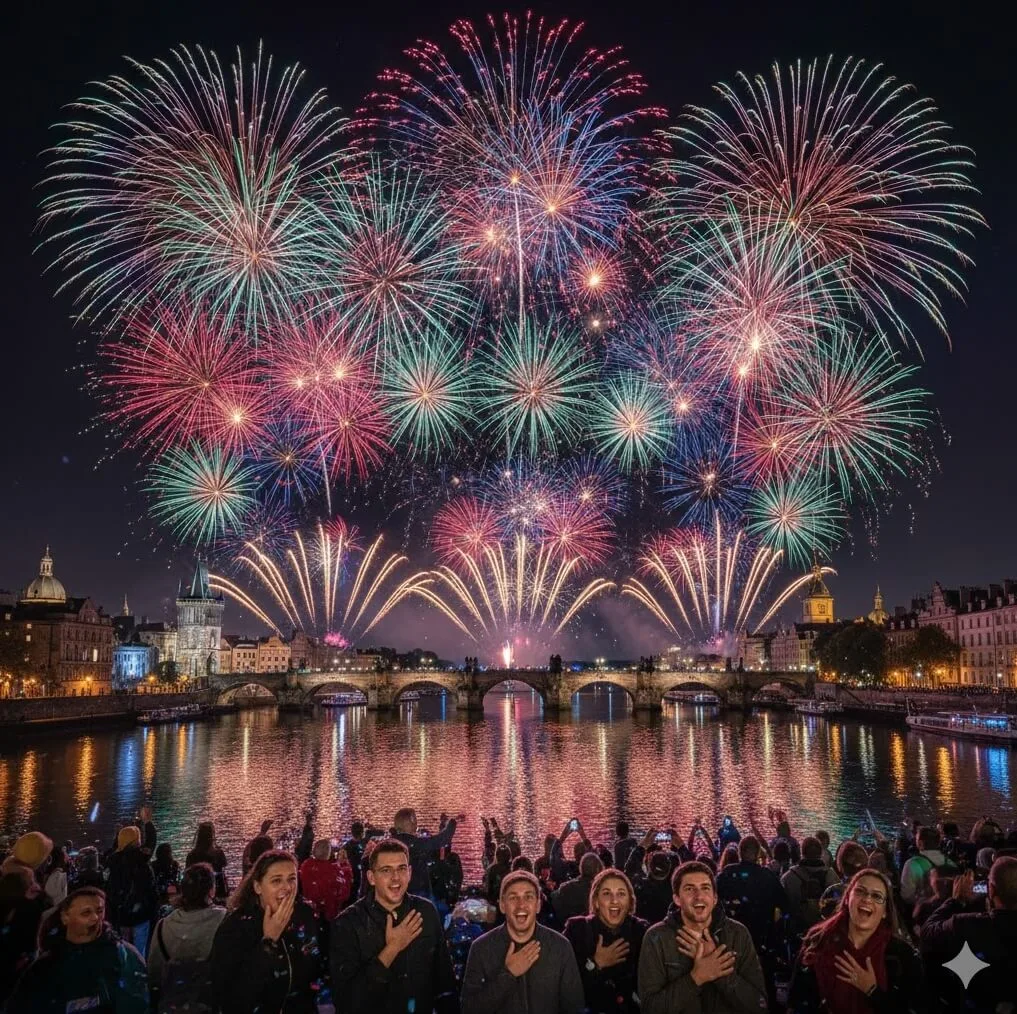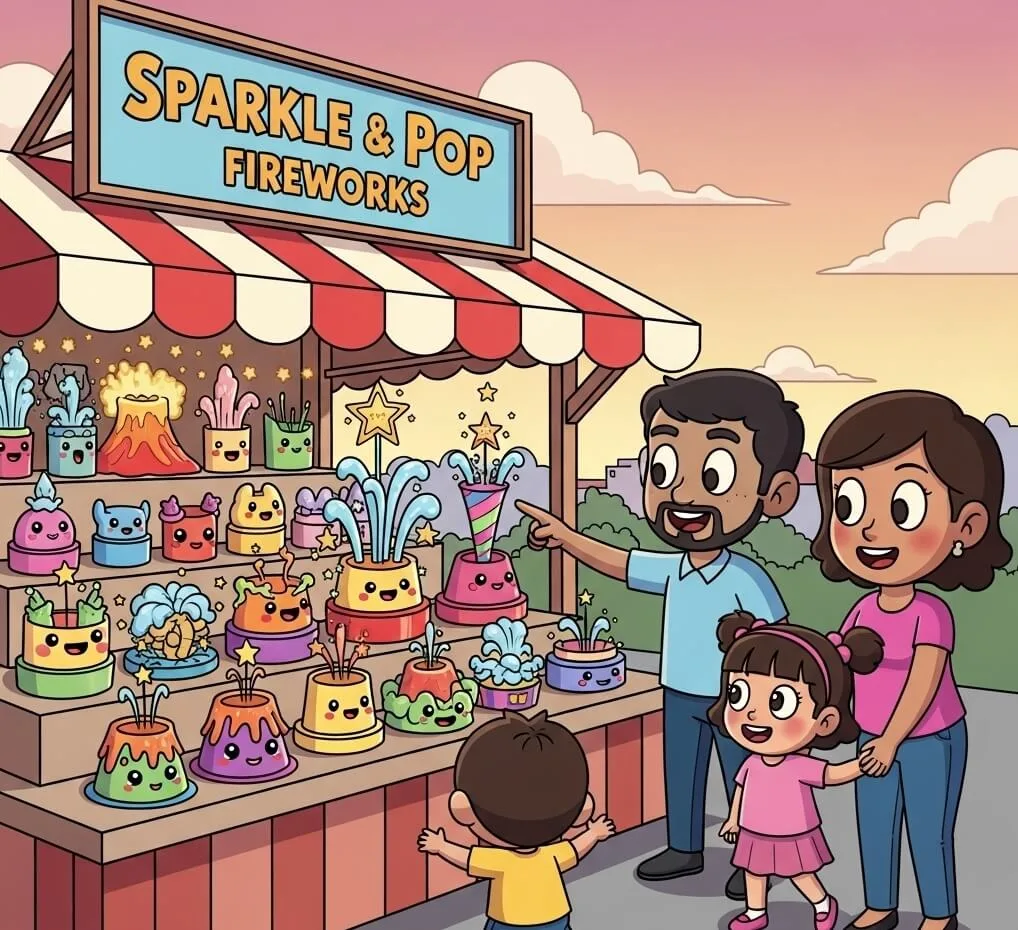Initially, fireworks were primarily used for military purposes. Subsequently, they gradually evolved into an important element in celebrations, symbolizing the expulsion of evil and avoidance of disaster.
In traditional Chinese festivals, setting off fireworks became a custom, signifying the welcoming of the new year and bidding farewell to the old, along with praying for blessings and good fortune.
In ancient fireworks production, people combined gunpowder with various materials to create the earliest fireworks. These fireworks were not only a symbol of festivities but were also regarded as sacred objects for warding off evil spirits and averting disasters.
During traditional festivals like the Spring Festival and Lantern Festival, setting off fireworks became an indispensable custom.
Throughout the long course of history, fireworks gradually evolved from their initial simple forms into today's dazzling and colorful displays.
In the Han Dynasty's "Baixi" (hundred plays) performances, there were already acts like "swallowing knives and spitting fire," demonstrating the early exploration of pyrotechnic art. After the Song Dynasty, fireworks production technology and variety reached unprecedented heights, with novel patterns such as "rising wheels," "running lines," and "meteors" emerging endlessly.
During the Ming Dynasty, the types of fireworks and methods of setting them off became even more diverse and colorful.
People no longer set them off sporadically but combined various firecrackers by tying them onto wooden frames in groups, creating spectacular, continuously burning displays. This method of setting off fireworks is still preserved and passed down in many places today.
Setting off fireworks and firecrackers, this traditional cultural custom, aims to add a festive atmosphere to holidays, and is also a way for people to entertain relatives and friends and express New Year's blessings.
In ancient times, this custom also carried the profound meaning of expelling evil spirits and warding off ghosts. In the 1980s and 1990s, when China's economic and social development was still in its nascent stages, the main ways people celebrated festivals included setting off fireworks, purchasing new home appliances, buying new clothes, and preparing delicious food. At that time, the variety of fireworks was relatively limited, mainly set off on important days like New Year's Eve, Spring Festival, the fifth day of the Lunar New Year, and the fifteenth day.
The fireworks burned then were primarily firecrackers and small firecrackers, along with some small fireworks for minors, such as glowing handheld and upward-shooting spray-type small fireworks.
The fireworks of that era, in terms of variety, brightness, display forms, and technological content, were far less abundant and sophisticated than today's. Of course, the consumption capacity of ordinary people at that time was also far lower than current levels.
